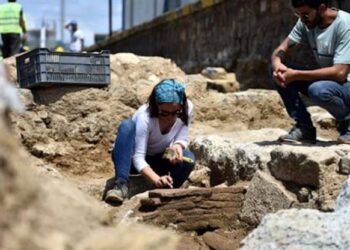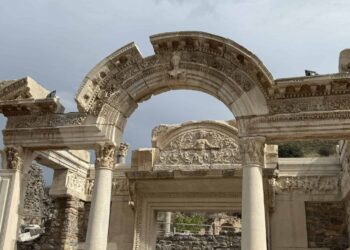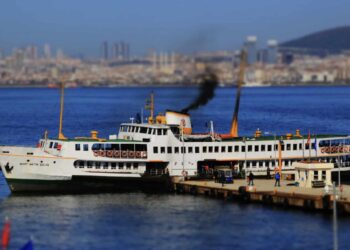At the Bosphorus’ narrowest throat, Mehmed II hurled up Rumelihisarı in just four blistering months of 1452—a stone noose that throttled Constantinople’s sea lifeline, taxed every hull that dared pass, and turned the strait into a siege engine—so that by 1453 the city’s fall felt less like a shock than a countdown already carved into the ramparts.
Table of Contents
A Marvel of Ottoman Architecture on the Bosphorus
Nestled along the European shores of the Bosphorus, Rumeli Fortress, also known as Rumelihisarı, stands as a testament to the strategic brilliance and architectural prowess of the Ottoman Empire. Built in just four months in 1452 under the orders of Sultan Mehmed II, aka Mehmed the Conquerer, this fortress played a pivotal role in the conquest of Constantinple, marking a significant turning point in world history.
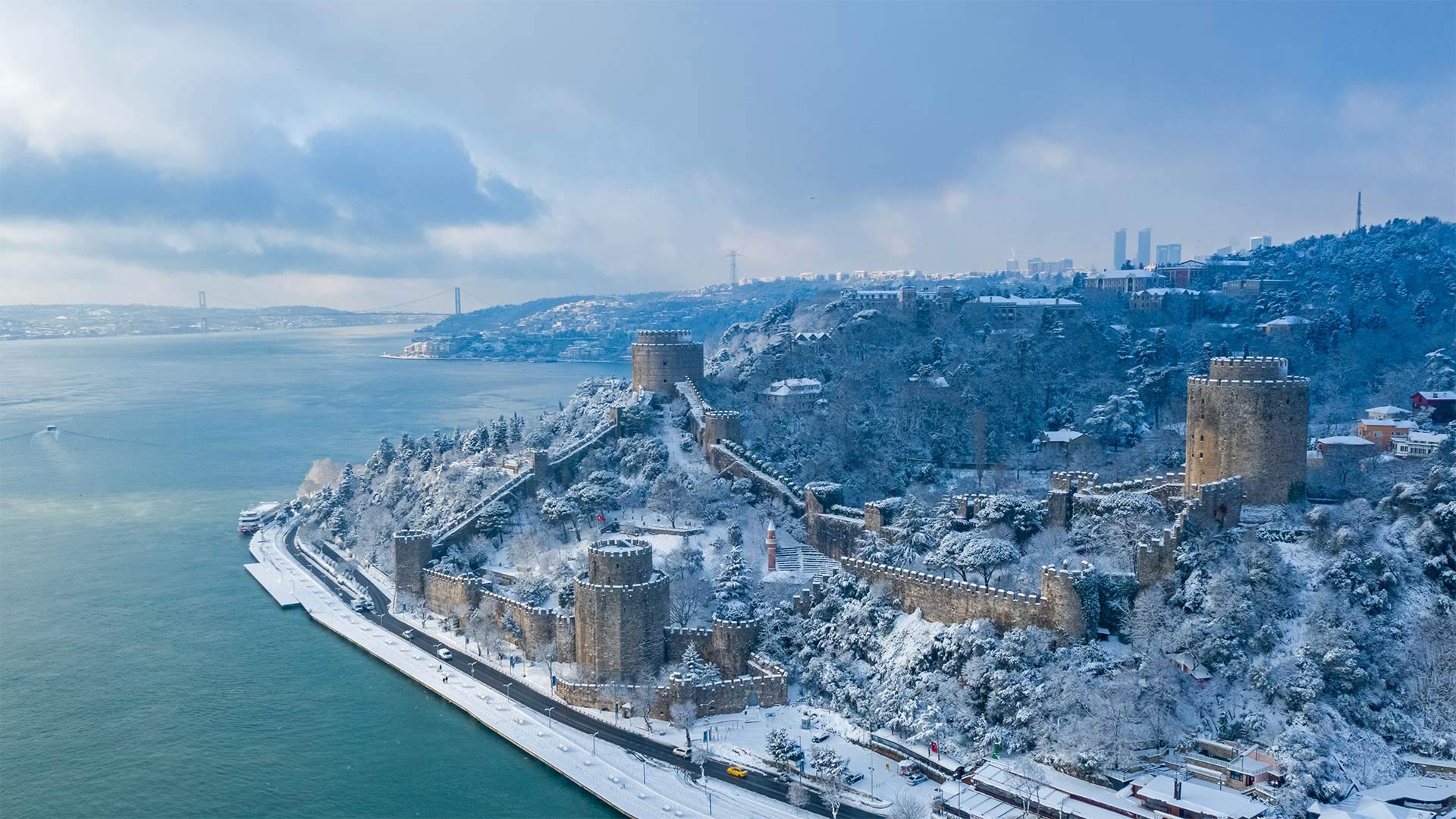
A Fortress with a Purpose
Rumeli Fortress was not merely a defensive structure but a key piece in Sultan Mehmed II‘s strategy to conquer Constantinople. Positioned directly across from the smaller Anadolu Fortress on the Asian side, Rumeli Fortress allowed the Ottomans to control the narrowest point of the Bosphorus Strait, effectively cutting off the city’s supply lines and isolating it from reinforcements. The fortress’s construction was a clear signal to the Byzantine Empire that the Ottomans were preparing for a decisive siege.
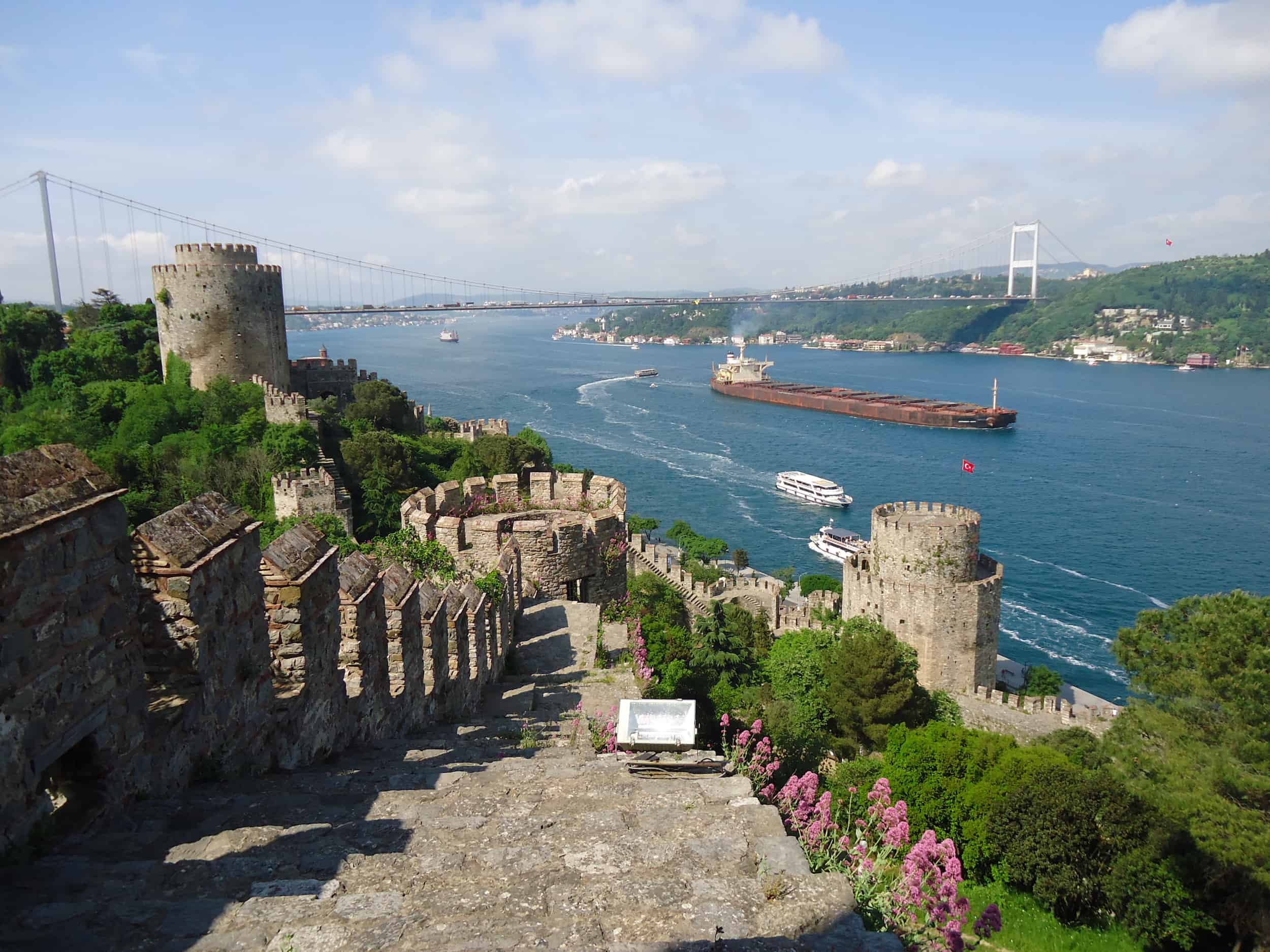
Architectural Brilliance
The architectural design of Rumeli Fortress is both formidable and elegant, showcasing the Ottomans’ advanced engineering skills. The fortress comprises three main towers, named after the viziers who supervised their construction: Halil Pasha, Saruca Pasha, and Zağanos Pasha. These towers are connected by thick, crenellated walls that form an irregular triangular shape, perfectly adapted to the terrain.

The Halil Pasha Tower, the largest of the three, is a massive, cylindrical structure rising 28 meters high, with walls up to 7 meters thick. It served as the fortress’s main stronghold, housing soldiers, weapons, and supplies. The smaller Saruca Pasha and Zağanos Pasha towers, though less imposing, are equally impressive, each featuring multiple floors with arrow slits, providing a strategic advantage during battle.
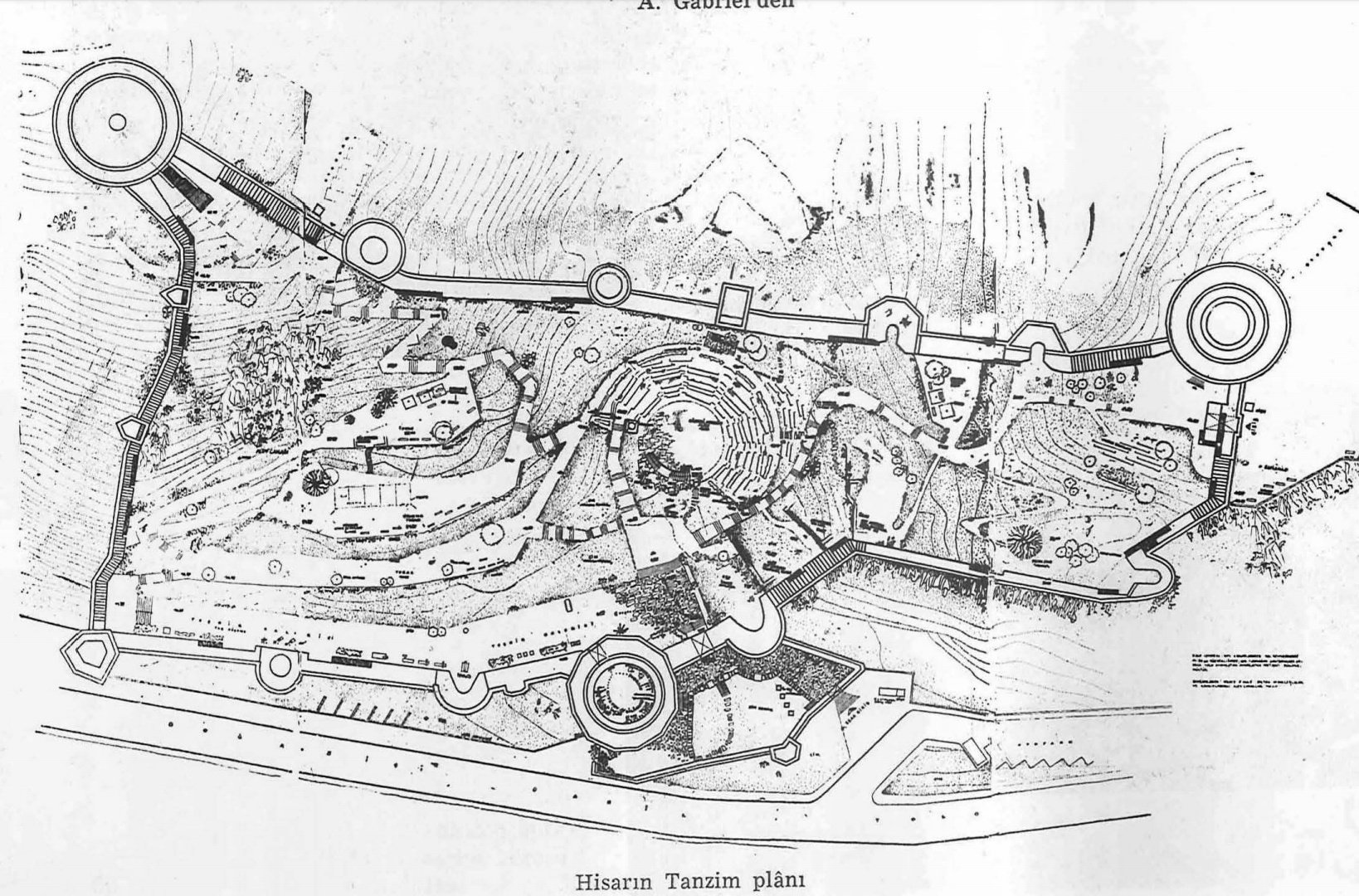
The fortress walls, stretching over 250 meters, are punctuated by 13 smaller watchtowers, adding to the fortress’s defensive capabilities. The design of the walls and towers allowed defenders to monitor and respond to threats from both land and sea, making Rumeli Fortress an impregnable barrier to any force attempting to pass through the Bosphorus.
Historical Significance
Rumeli Fortress is not just a symbol of military might but also a key to understanding the history of Istanbul. Building the fortress took only a mind-blowing four months, from March 1452 to August 1452.
Sultan Mehmed II employed a massive workforce, estimated to be around 3,000 labourers, including stonemasons, carpenters, and other skilled workers. The Sultan personally oversaw the construction, demonstrating the importance he placed on this project.
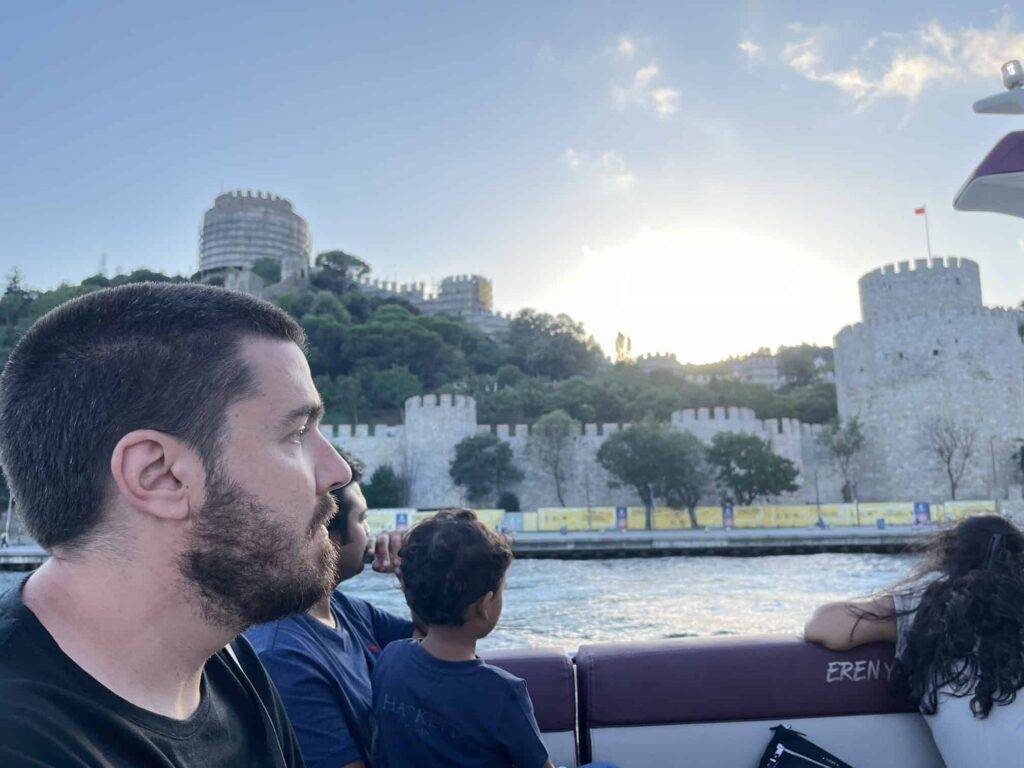
The fortress’s role in the conquest of Constantinople cannot be overstated. By controlling the Bosphorus, the Ottomans were able to lay siege to the city, eventually leading to its fall in 1453. This victory not only marked the end of the Byzantine Empire but also the beginning of a new era in the region, with Istanbul becoming the capital of the Ottoman Empire.

From above, does Rumeli Fortress really spell ‘Muhammad’ (محمد) in Arabic script?
From a bird’s-eye view many locals read Rumelihisarı as محمد (“Muhammad”): the three vizier towers line up like letters joined by the crenellated walls. While no 15th-century plan proves intentional calligraphy, the legend harmonizes with the Prophet’s famed hadith about Constantinople and Mehmed II’s faith-charged vision for the siege.
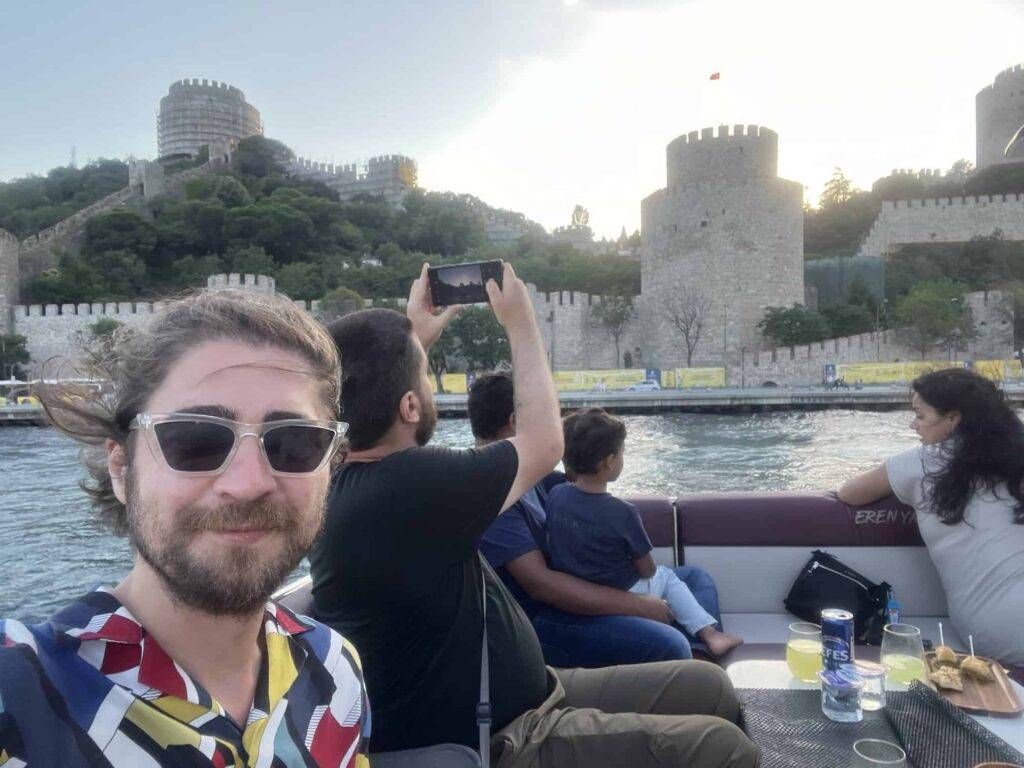
Today, Rumeli Fortress stands as a museum, one that is simultaneously under restoration work, still offering visitors a glimpse into its storied past. As you walk through its massive gates, explore its towers, and trace your fingers along the ancient stone walls, you can almost hear the echoes of the past—the clanging of swords, the shouts of soldiers, and the sounds of history being made.

Visiting Rumeli Fortress
A visit to Rumeli Fortress is a journey back in time. The site offers stunning views of the Bosphorus, where you can watch ships pass through the same waters that once determined the fate of empires. Whether you’re a history enthusiast, an architecture lover, or simply looking to explore one of Istanbul’s lesser-known gems, Rumeli Fortress is a wonderful option.
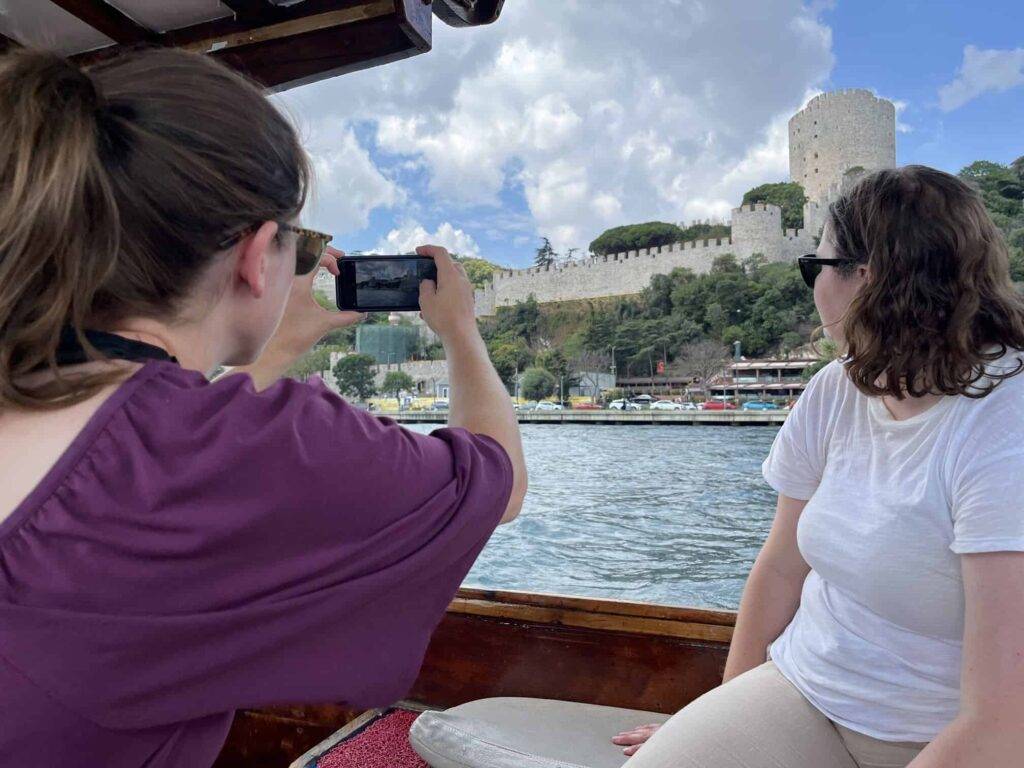
The fortress is easily accessible from central Istanbul, either by a scenic Bosphorus cruise or a short drive. While the climb to the top of the towers can be steep, the panoramic views of the Bosphorus and the surrounding city are well worth the effort.
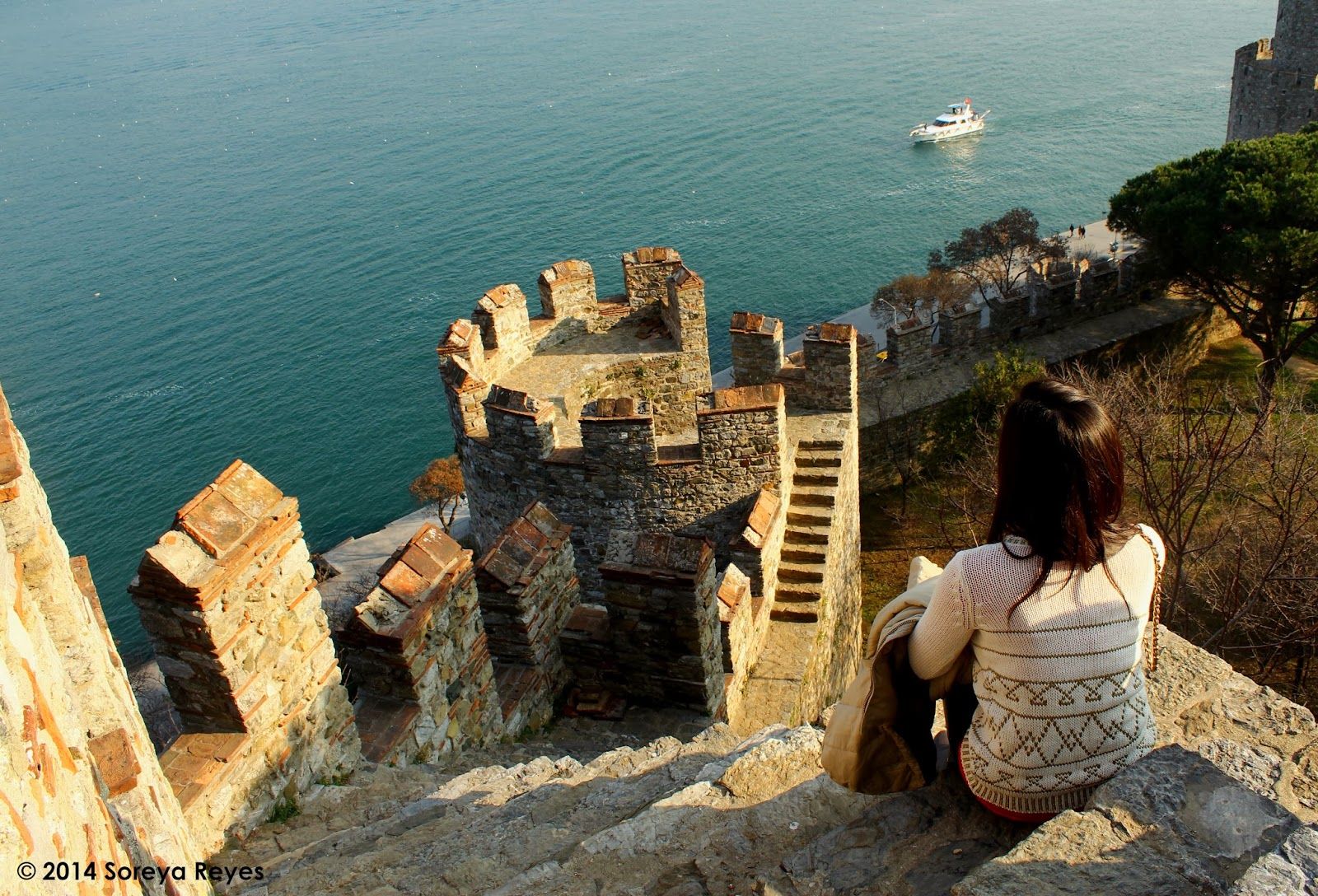
Stepping Inside the Fortress
Once inside, the fortress reveals its true character. The interior is a maze of narrow staircases, winding corridors, and hidden corners, each one offering a new perspective on the fortress and the stunning views beyond. The towers, once filled with soldiers and supplies, are now open to the sky, their interiors bathed in natural light. Climbing to the top of these towers is a rewarding challenge. Each step brings you closer to a breathtaking panorama of the Bosphorus, where the shimmering water meets the distant horizon.
The walls of the fortress, thick and impenetrable in their day, now provide a perfect vantage point for soaking in the serene beauty of the surrounding area. From here, you can see the sprawling city of Istanbul to the south, with its blend of modern buildings and ancient landmarks, and to the north, the Bosphorus stretches out like a ribbon of blue, dotted with boats and ships.
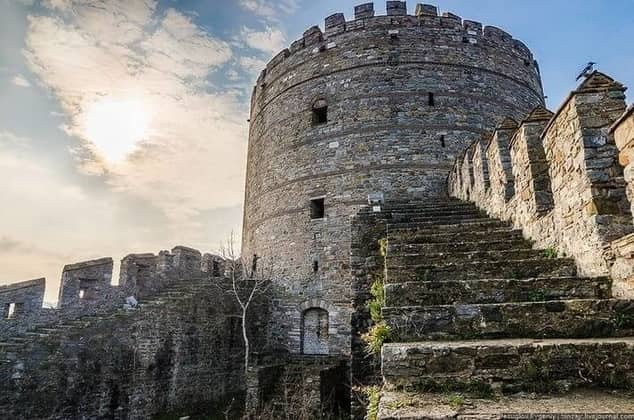
Restoration Works: Preserving History
Today, Rumeli Fortress is undergoing extensive restoration work aimed at preserving its structural integrity and historical significance for future generations. The restoration started in early 2021. These efforts are crucial, as the fortress has endured centuries of exposure to the elements, leading to the deterioration of some of its walls and towers.
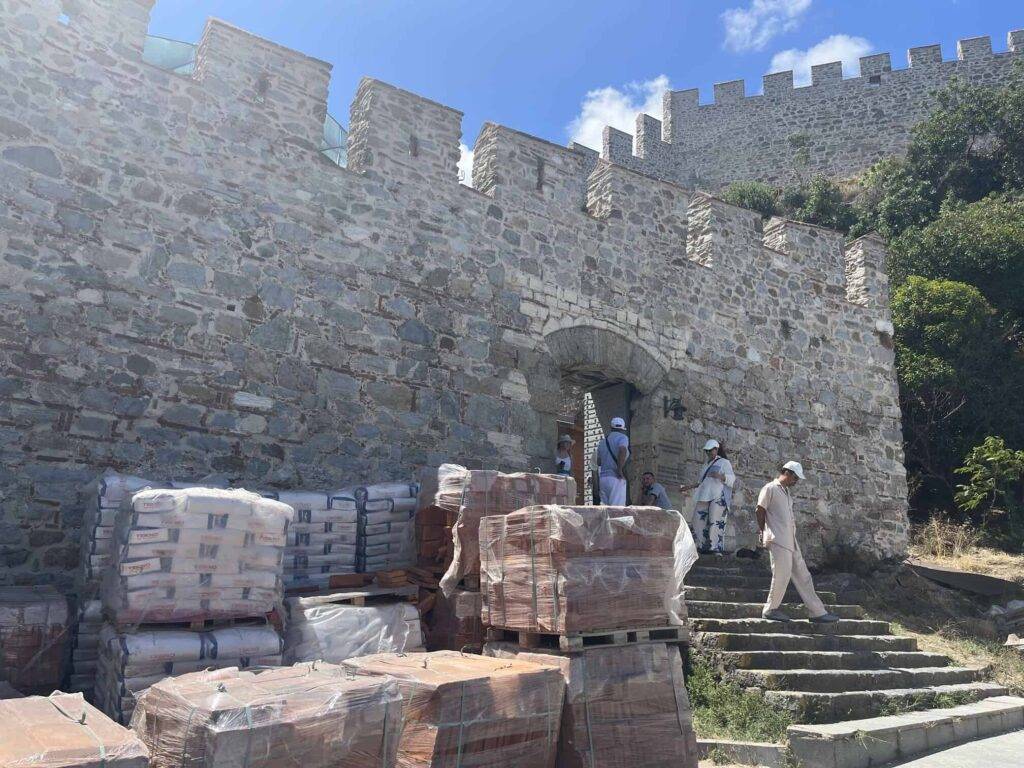
The restoration process involves carefully repairing and reinforcing the fortress’s stonework, ensuring that the original materials and architectural details are preserved as much as possible. Skilled craftsmen and historians work together to restore the fortress to its former glory, using techniques that respect the original construction methods while incorporating modern technology to protect the structure from further decay.
During your visit, you may notice scaffolding and work crews at various points around the fortress. While this ongoing work means that some areas may be temporarily inaccessible, it also offers a unique opportunity to witness the meticulous care being taken to preserve this historical treasure. The restoration efforts serve as a reminder of the fortress’s enduring significance and the importance of maintaining such sites for future generations to explore and appreciate.
In conclusion, the Rumeli Fortress is more than just a historical monument; it symbolises the Ottoman Empire‘s strategic genius and architectural mastery. A visit to this fortress is not just a chance to explore a piece of history but to stand at the crossroads of civilisations, where East meets West, and the past meets the present.
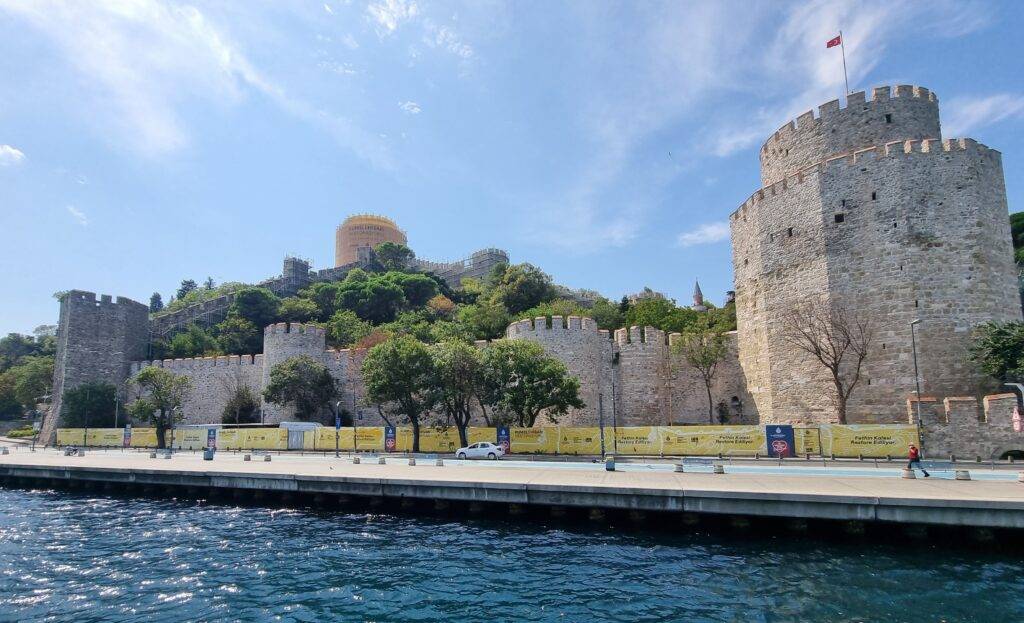
Book a guided tour with us
If you’re interested in a guided tour of Rumeli Fortress or exploring any part of Istanbul, we’d be delighted to create a personalized experience just for you. Simply fill out the form below, and let’s start planning your unforgettable journey!


